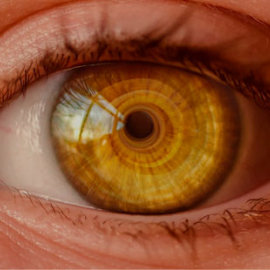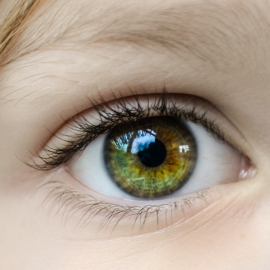Floaters are age-related changes caused when the jelly-like substance (vitreous) inside your eyes becomes more liquid. That vitreous helps maintain the round shape of the eyeball. Microscopic fibers within the vitreous clump and cast tiny shadows on your retina. Over time, the vitreous partially liquefies — a process that causes it to pull away from the eyeball's interior surface. As the vitreous shrinks and sags, it clumps and gets stringy. This debris blocks some of the light passing through the eye, casting tiny shadows on your retina that are seen as Floaters.
If you are over age 50, are nearsighted or have experienced eye trauma, complications from cataract surgery, diabetic retinopathy or eye inflammation, you are at risk of Floaters.
Besides age-related change, Floaters can result from:
Inflammation in the back of the eye. Posterior uveitis is inflammation in the layers of the uvea in the back of the eye. This condition can cause the release of inflammatory debris into the vitreous that are seen as Floaters. Posterior uveitis may be caused by infection, inflammatory diseases or other causes.
Bleeding in the eye. Bleeding into the vitreous can have many causes, including diabetes, hypertension, blocked blood vessels and injury. Blood cells are seen as Floaters.
Eye surgeries and eye medications. Certain medications that are injected into the vitreous can cause air bubbles to form. These bubbles are seen as shadows until your eye absorbs them. Certain vitreoretinal surgeries add silicone oil bubbles into the vitreous that can also be seen as Floaters.

_270_270_c1_c_c.jpg)

Floaters and flashes can also indicate a retinal tear or detachment.
Contact your physician if you notice:
These painless symptoms could be caused by a retinal tear, with or without a retinal detachment — a sight-threatening condition that requires immediate attention.
Retinal tears can occur when a sagging vitreous tugs on the retina with enough force to tear it. Without treatment, a retinal tear may lead to retinal detachment — an accumulation of fluid behind the retina that causes it to separate from the back of your eye. Untreated retinal detachment can cause permanent vision loss.
If you notice a sudden increase in eye Floaters, contact your eye specialist immediately. Light flashes or loss of peripheral vision can be symptoms of a medical eye emergency and require prompt attention.